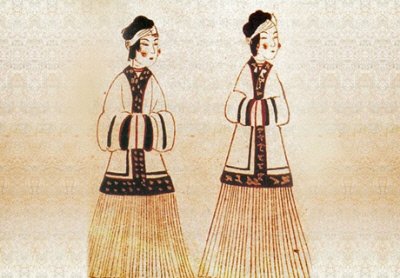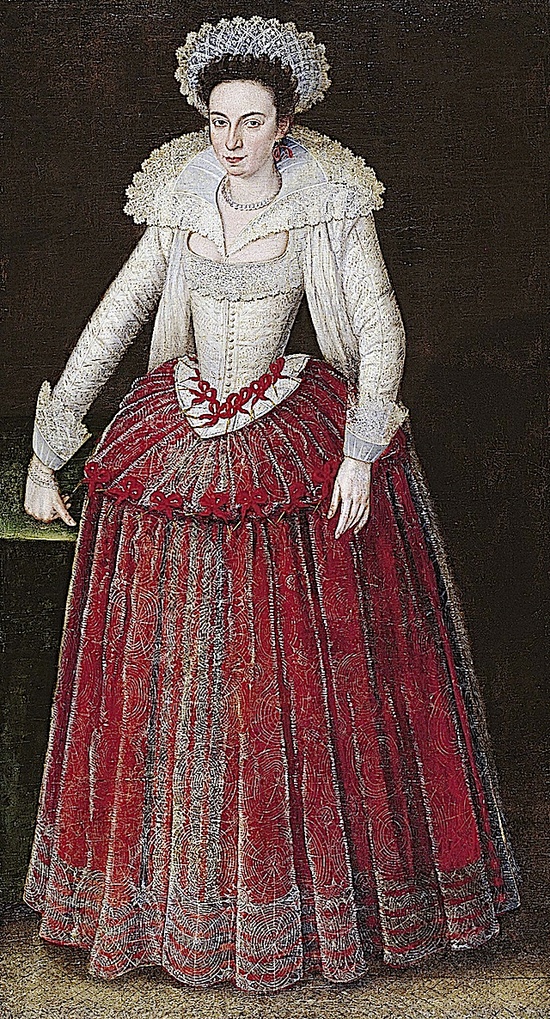HISTORY OF PLEATS
Pleating is a textile technique that involves folding fabric back and forth in a uniform manner to create a pattern of parallel ridges and valleys. The use of pleats in clothing and textiles dates back centuries and has been used in various cultures and regions throughout history. Pleats were used to make garments more comfortable and functional as it has no limitation on sizes.
One of the earliest examples of pleated fabric can be found in ancient Egypt, where pleats were used in the clothing of both men and women for flowing and elegant silhouette.

Back in The Goryeo dynasty (918 to 1392 CE), which is now Korea, the pleated skirt is the main characteristic of their traditional clothing Hanbok. The pleated chima was considered a symbol of the wearer's wealth and status, as the pleating process was time-consuming and required a large amount of fabric. The pleats were usually made by folding the fabric in a zigzag pattern and then stitching it in place, a technique known as tucks. The tucks could be sewn in a variety of patterns, depending on the desired effect, and could be combined with other decorative techniques such as embroidery, appliqué, and painting.


During the Middle Ages in Europe, pleating was used in the creation of elaborate ruffs and collars worn by their aristocracy, which served as a symbol of their high social status. Pleats were also utilized to add volume and structure to clothing.
The art of pleating during this time was accomplished through various techniques such as knife pleating, which involved folding fabric in a uniform manner to create sharp, angular pleats. Box pleating was another popular method, which produced wider pleats that lay flat and neat. Cartridge pleating, on the other hand, created tightly gathered pleats that were used for creating fullness in garments.

The popularity of pleated fabrics continued into the 20th century, with designers such as Mariano Fortuny and Issey Miyake using their pleating techniques in their designs. Mariano Fortuny created fluid, drapey garments that were inspired by classical Greek and Roman styles. Fortuny's pleating technique involved pleating fabric by hand, using a process that he called "delphos." The resulting garments were often made from lightweight silk and had a distinctive shimmering quality.

(Photo Credit: Mariano Fortuny)
Issey Miyake's heat-setting process to permanently set pleats into fabric. He called this technique "garment pleating," and it allowed him to create clothes that were both sculptural and functional. Miyake's pleated garments often have a futuristic or architectural feel, and they are designed to be easy to wear and care for.
Miyake's pleated garments are often made from lightweight synthetic fabrics such as polyester, which are ideal for heat-setting. The pleating process is done after the fabric is cut and sewn, and involves folding the fabric in a specific pattern and then applying heat and pressure to set the pleats in place. The resulting fabric has a unique texture and can be manipulated in a variety of ways to create different shapes and forms.
(Photo credit "Staircase Pleats" owned by Metropolitan Museum of Art)
Today, pleated fabrics continue to be popular in fashion and textiles, with new techniques and technologies allowing for a wide range of pleat styles and designs. From classic accordion pleats to modern laser-cut pleats, pleating remains a timeless and versatile textile technique.
At Wild Cosmos, we believe that the art of pleating is still relevant and important in the 21st century. That's why we strive to be the leading apparel company to continue the legacy of pleats in modern fashion. We believe that pleats offer a unique way to add texture, structure, and movement to clothing, and we are committed to exploring new techniques and styles to keep pleating fresh and exciting.
